Narrowing down the best art museums In Italy makes for some difficult decisions. After all, you could say that the country is just a vast art collection, with its beautiful architecture, historic churches, and a wealth of civic sculpture dating back several millennia.
You’ll see beauty in ancient frescoes, on the ceilings of churches, in splashing fountains, and in graceful statues wherever you go in Italy. And you could argue that there are different kinds of art, from sleek Italian cars to exquisite fashions.
In truth, Italy offers a bewildering range of places to admire priceless art, from historic palaces to superb modern galleries. Here is a list of the best art museums in Italy, any of them a good place to start.
Vatican Museums, Rome
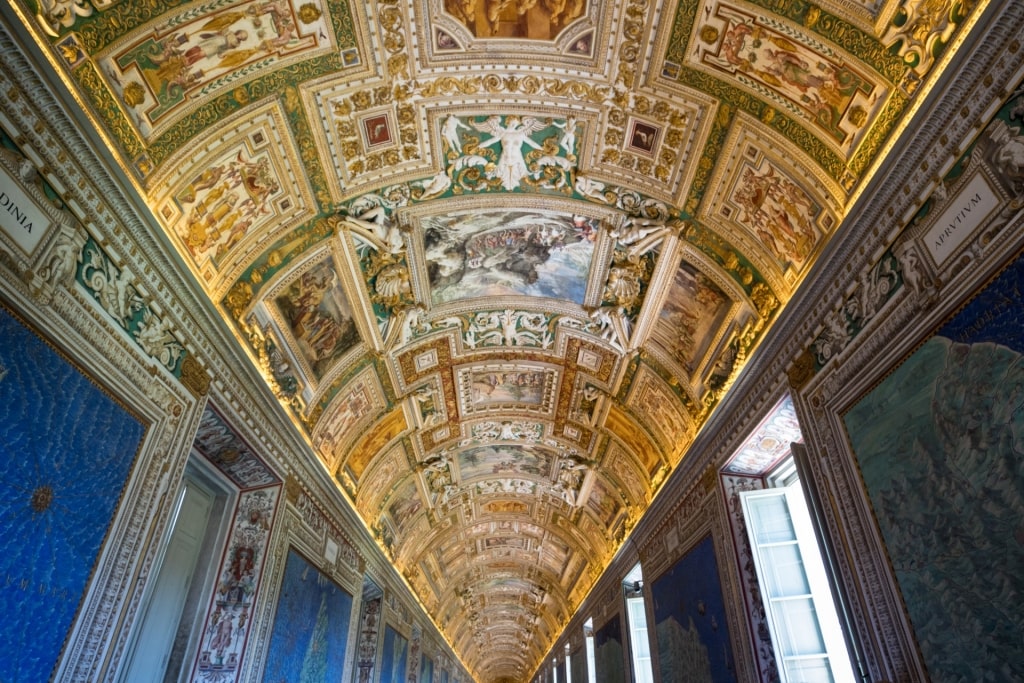
Vatican Museum, Rome
The Vatican Museums in Rome are the most visited galleries in Italy, and there is an overwhelming collection of treasures to see.
If it’s your first visit, you’ll want to find highlights such as Caravaggio’s The Entombment of Christ, and Raphael’s Transfiguration, painted when the great artist was only 37.
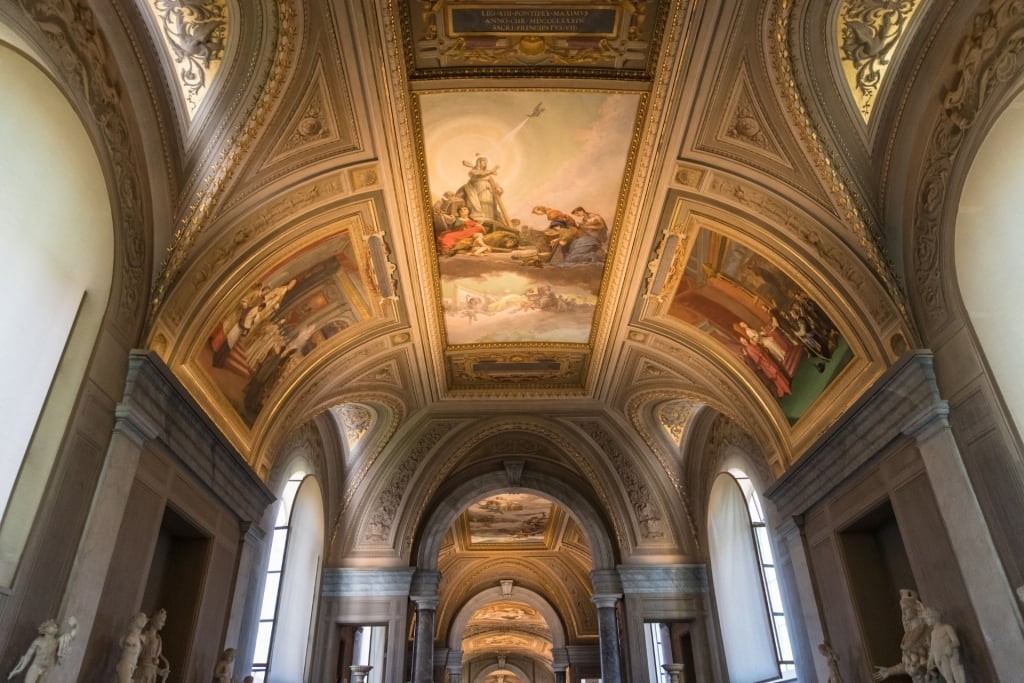
Sistine Chapel, Rome
The ceiling of the Sistine Chapel is another must-see Roman landmark, of course. After admiring art by masters such as da Vinci, Giotto, and Botticelli, leave some time for the Gallery of Maps, which took Ignazio Danzi three years to finish.
Much of the work, however, is by unknown artists, including the awesome Laocoön sculpture. Dating to around 30 BCE, it shows two sea serpents entwining the Trojan priest Laocoön, and his two sons.
Uffizi Gallery, Florence
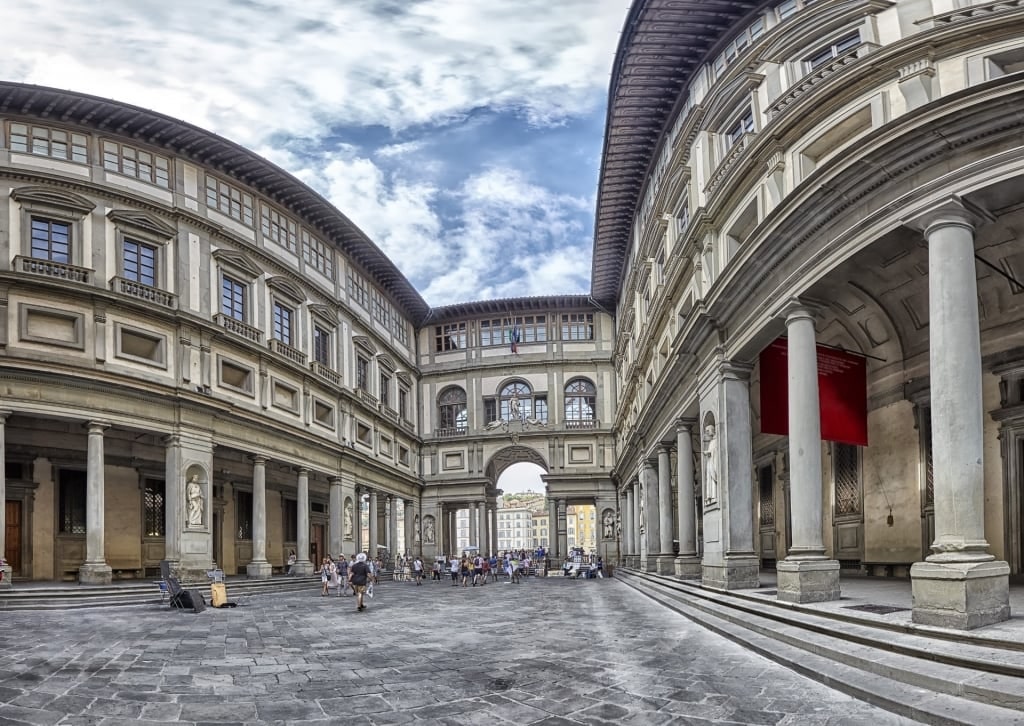
Uffizi Gallery, Florence
The building alone here, housing one of the greatest art museums in Italy, is a highlight of Florence, itself a city that inspires visitors to swoon in wonder.
Pace yourself among the exhausting delights of the Uffizi in case you too succumb to the so-called Stendhal Syndrome—a rare condition in which one faints when confronted with great beauty.
One of the oldest museums in the world, the Uffizi was built in 1581, and contains many works that are now justly world famous. These include Leonardo’s Annunciation, and part of Paolo Uccello’s The Battle of San Romano. Major names from Caravaggio to Titian, and Rembrandt to Dürer are also represented.
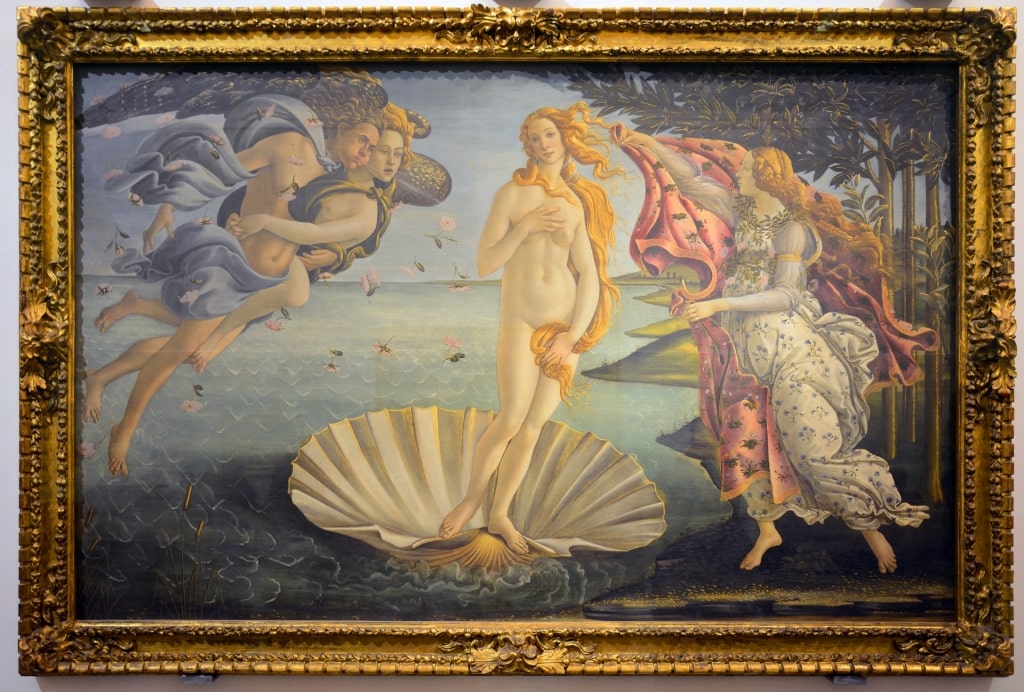
Birth of Venus Photo by Livioandronico2013 on Wikimedia Commons, licensed under CC BY-SA 4.0
A major highlight is Botticelli’s Birth of Venus, famously showing the goddess on a seashell. Painted around 1485, it has been much reproduced on everything from cushions to handbags, but still retains its wonder.
Doge’s Palace, Venice
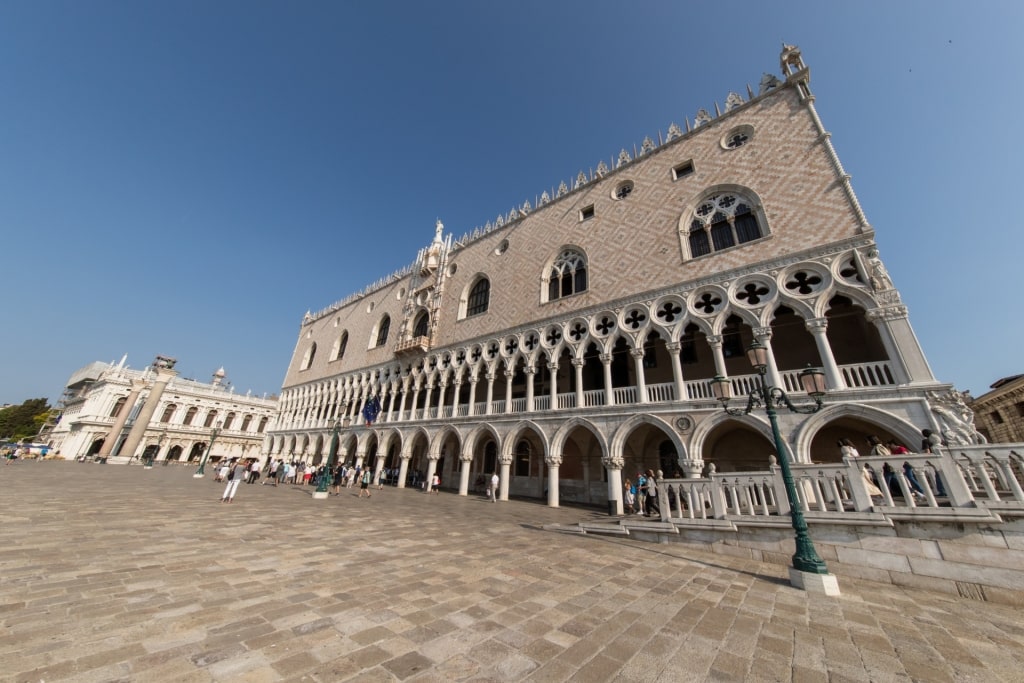
Doge’s Palace, Venice
The palace of the former rulers of Venice is a showcase of art, as well as being a gothic-renaissance wonder itself. The Venetian Republic lasted for 1,000 years, and Tiepolo’s Neptune Bestowing Gifts upon Venice reflects the prosperity of its Mediterranean empire.
Other major works include Veronese’s Triumph of Venice, and Rape of Europa, and Tintoretto’s Il Paradiso. This latter is the world’s largest oil painting, and dominates the palace’s Great Council hall.
The frescos by Veronese on the ceiling of the hall are another major sight. From the ornate Scala d’Oro (golden staircase), you can also enjoy a view of the Bridge of Sighs.
Read: Romantic Italian Honeymoon Destinations
National Archaeological Museum, Naples
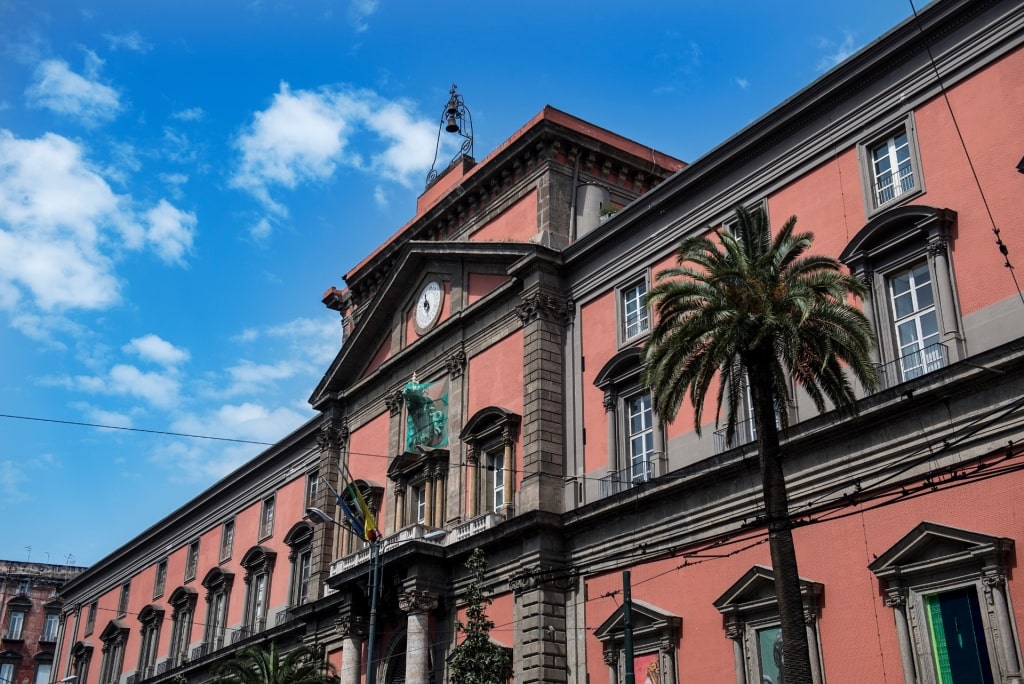
National Archaeological Museum, Naples
While the renaissance period produced many of Italy’s artistic wonders, it was focused on a rebirth of the art of classical antiquity. You can see many of those original older wonders in this museum, full of sculptures from Greek, Roman, and Egyptian artists.
Excavations at Pompeii and Herculaneum are to be thanked for some of the many mosaics, sculptures, glassware, and silver on display. The Gabinetto Segreto (Secret Cabinet) of erotica from both buried cities is a more unusual collection.
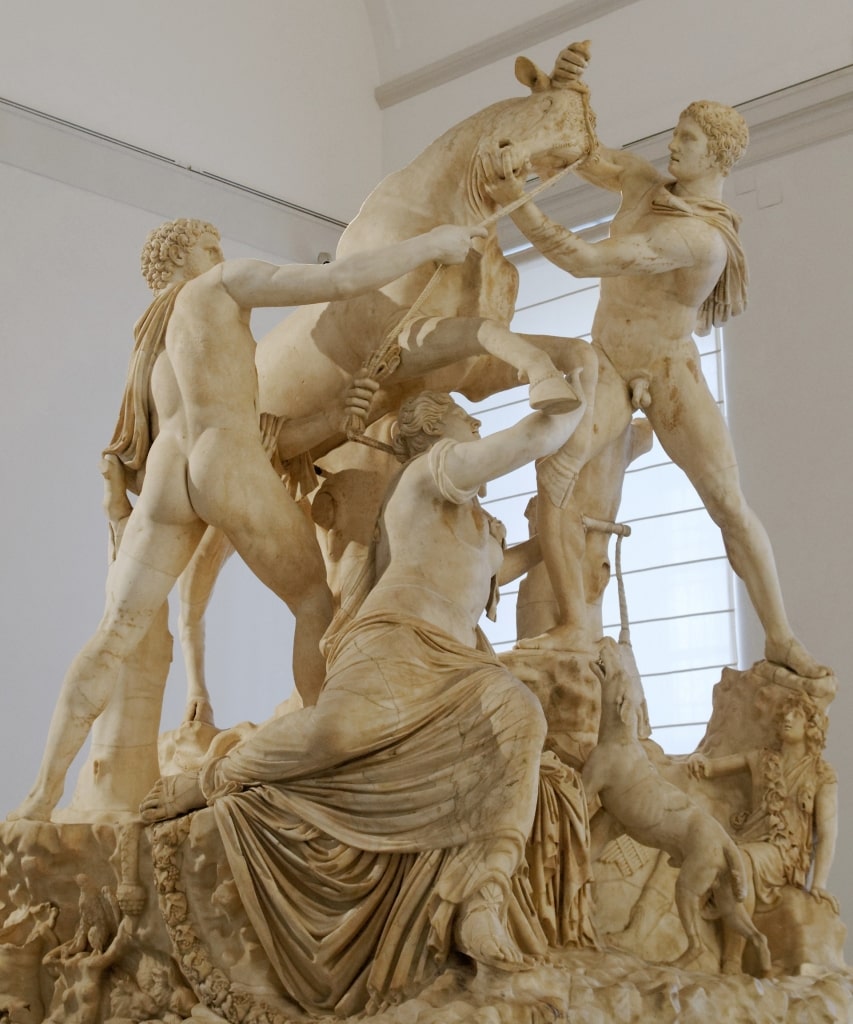
Farnese Bull Photo by Marie-Lan Nguyen on Wikimedia Commons, licensed under CC BY 2.5
The Farnese Bull is a massive marble sculpture excavated in Rome in 1546 and dating to around 230 BCE. Weighing more than 20 tons, it is a Roman copy of a Greek original.
Read: Best Things to Do in Naples, Italy
Borghese Gallery, Rome
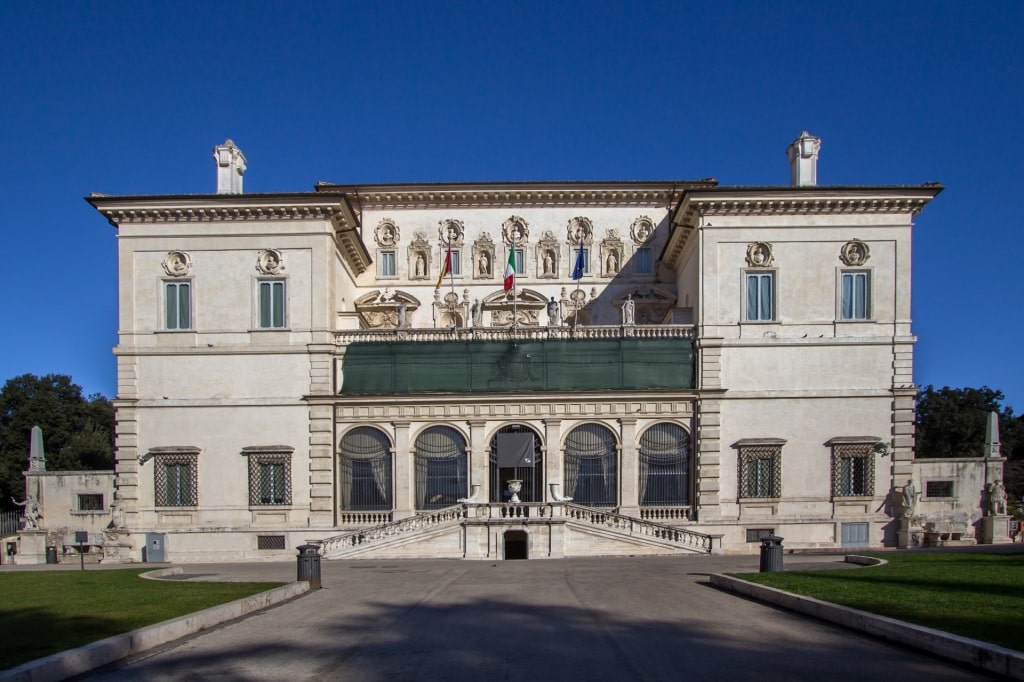
Borghese Gallery, Rome
Cardinal Scipione Borghese (1577-1633) supported artists such as Caravaggio and Bernini. So it’s no surprise some of their greatest works make up the highlights of his art collection, displayed in this beautiful 17th-century villa.
These include Bernini’s Apollo and Daphne, and David. From Caravaggio, it’s David with the Head of Goliath, and his self-portrait as a very hungover-looking Bacchus.
Look out for Canova’s luscious marble rendering of Paolina Borghese Bonaparte, the younger sister of France’s Napoleon Bonaparte.
Museo dell’Opera del Duomo, Florence
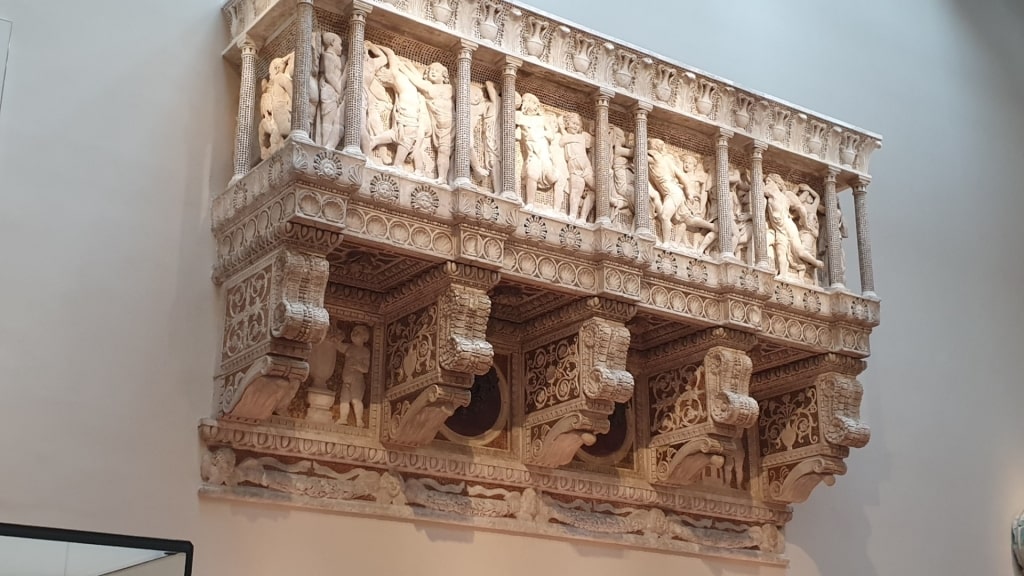
Museo dell’Opera del Duomo, Florence Photo by Yair Haklai on Wikimedia Commons, licensed under CC BY-SA 4.0
If you can tear your eyes away from Florence’s wondrous cathedral, a visit to its museum is another treat. It houses much of the original art created for the duomo itself.
This is where Michelangelo secretly carved his David, originally intended for the cathedral’s roof. It’s now in the Galleria dell’Accademia, but you can still see his unfinished Florentine Pietà.
You start in the Hall of Paradise which showcases an original design for the duomo’s facade. Forty statues from elsewhere in the museum—including works by Michelangelo, and Donatello—are copied here as they would have been seen originally.
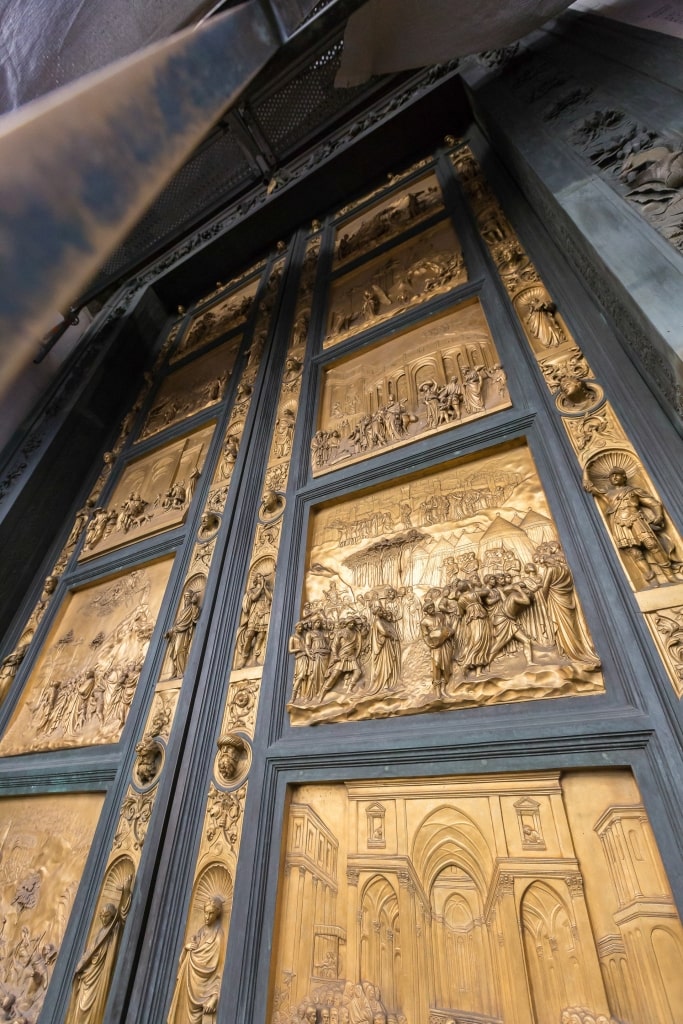
Ghiberti’s Gates of Paradise
Another highlight is Ghiberti’s Gates of Paradise—a nickname given by Michelangelo. Ghiberti worked on these wonderful gilded bronze doors for nearly three decades.
Galleria dell’Accademia, Venice

Galleria dell’Accademia, Venice
Take a trip through time by following Venetian art in chronological order as you walk through this important gallery. Founded in 1750 for the study of art and—a novelty at the time—its restoration, the collection was first opened to the public in 1817.
The showpiece is undoubtedly Leonardo da Vinci’s much-reproduced drawing of Vitruvian Man. However, you’ll be lucky to see this fragile work as it is rarely on show.
Other highlights include Sebastiano Ricci’s nude grouping of Diana and Callisto, and Paolo Veronese’s The Feast in the House of Levi. Titian’s Saint John the Baptist, and Tintoretto’s Saint Mark’s Body Brought to Venice are also major works.
Medici Palaces, Florence
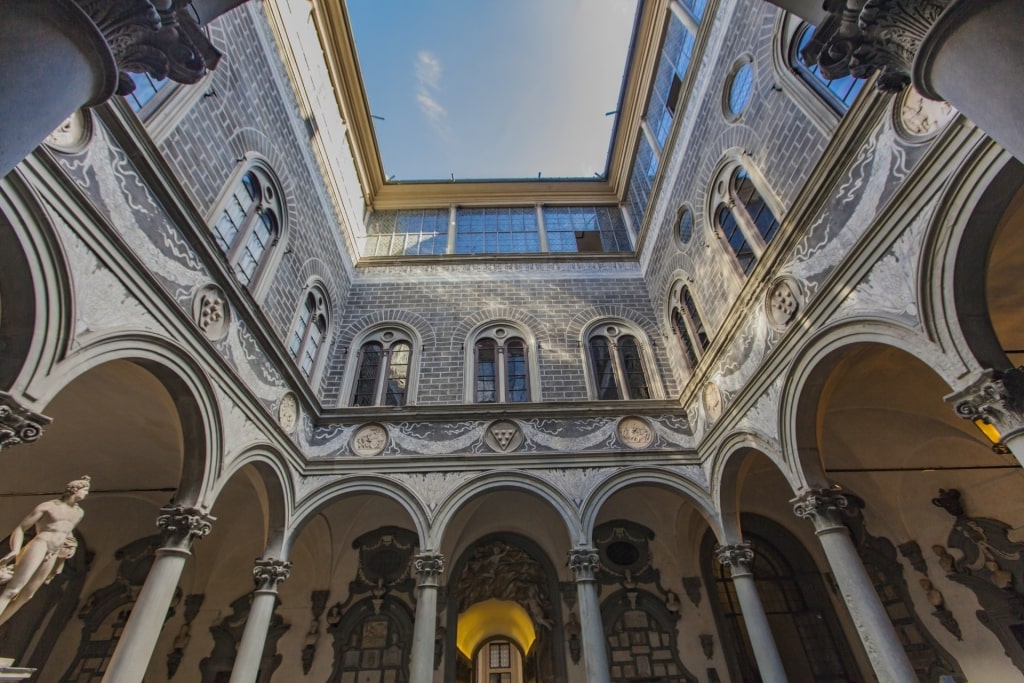
Palazzo Medici Riccardi
The Medici family ruled Florence for more than 300 years, producing bankers, politicians, and popes. Their magnificent collection of renaissance art is now housed in three separate palaces.
The Medicis were patrons to artists such as Michelangelo, Leonardo da Vinci, Botticelli, Donatello, and Fra Angelico. A vast collection of frescoes, paintings, sculptures, costumes, and jewelry was gifted to the people of Florence in 1743 on the condition it would never be sold.
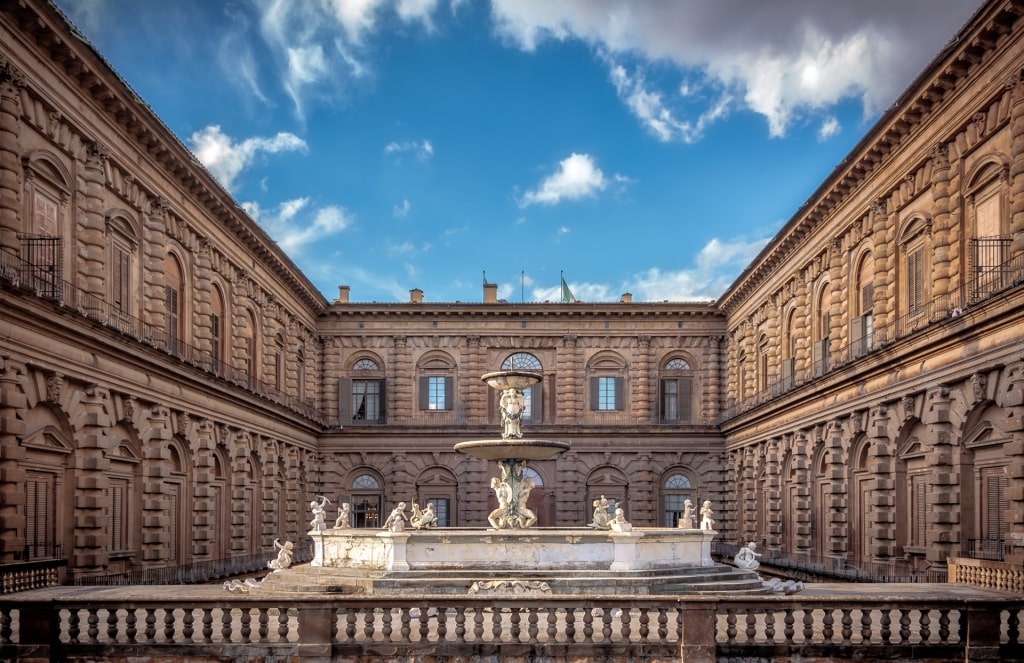
Palazzo Pitti
The art is split between the original Palazzo Medici Riccardi, the later Palazzo Vecchio, and Palazzo Pitti, the largest. If you’ve time for only one, make it the Pitti, to see highlights such as Raphael‘s La Velata, Titian‘s Maria Magdalena, and Rubens’ The Consequences of War.
Galleria Nazionale dell’Umbria, Perugia
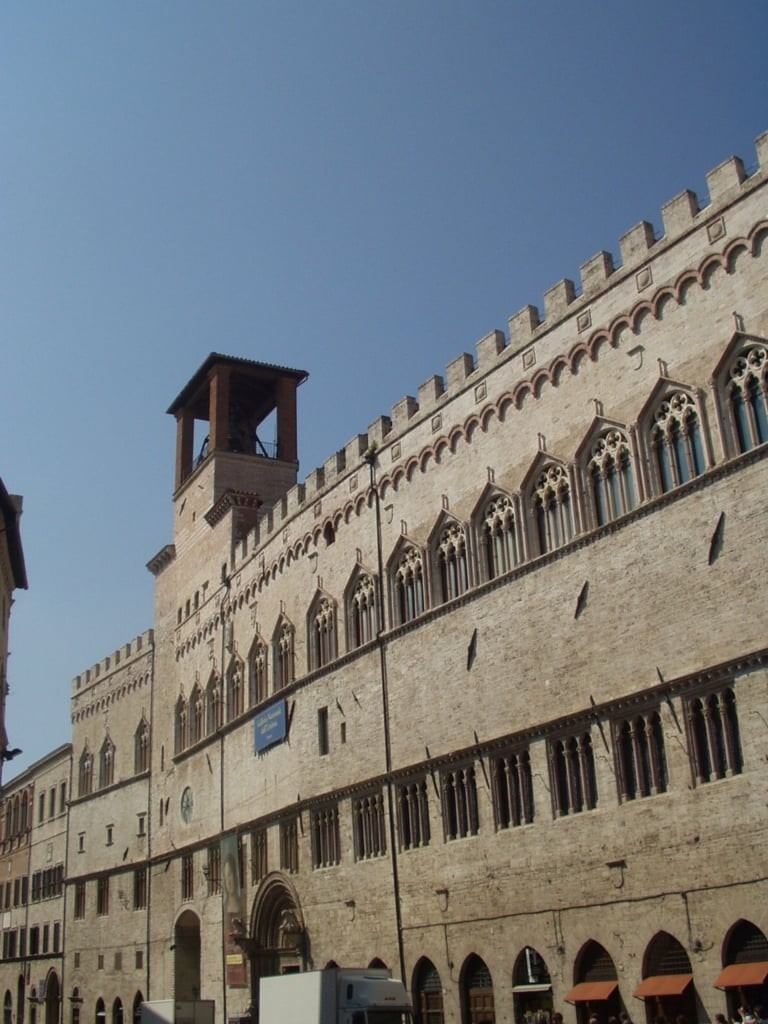
Galleria Nazionale dell’Umbria, Perugia Photo by Danielac on Wikimedia Commons, licensed under CC BY-SA 3.0
The National Gallery of Umbria is essential for anyone interested in the history of renaissance art. Works such as the Triptych of Perugia, dating to around 1280, show the Oriental influences that were then the foundation of the style of the unknown Tuscan painters.
A break from this Byzantine style can already be seen in Duccio di Buoninsegna’s Madonna with Child, showing a more natural pose, from about 1300. Like many other pieces in this collection, it happily remains in Perugia—the city where it was first commissioned.
By 1643, the time of Pietro da Cortona’s Nativity of the Virgin, a recognizably Florentine style had evolved even more. This lively scene of Mary’s birth, with attendants in colorful contemporary Italian clothing, was even thought too naturalistic by the monks who commissioned it.
Bridging that period are other significant works such as Fra Angelico’s gothic Perugia Altarpiece of 1447. Another is Piero della Francesca’s Polyptych of St. Anthony from 1469.
Galleria dell’Accademia, Florence
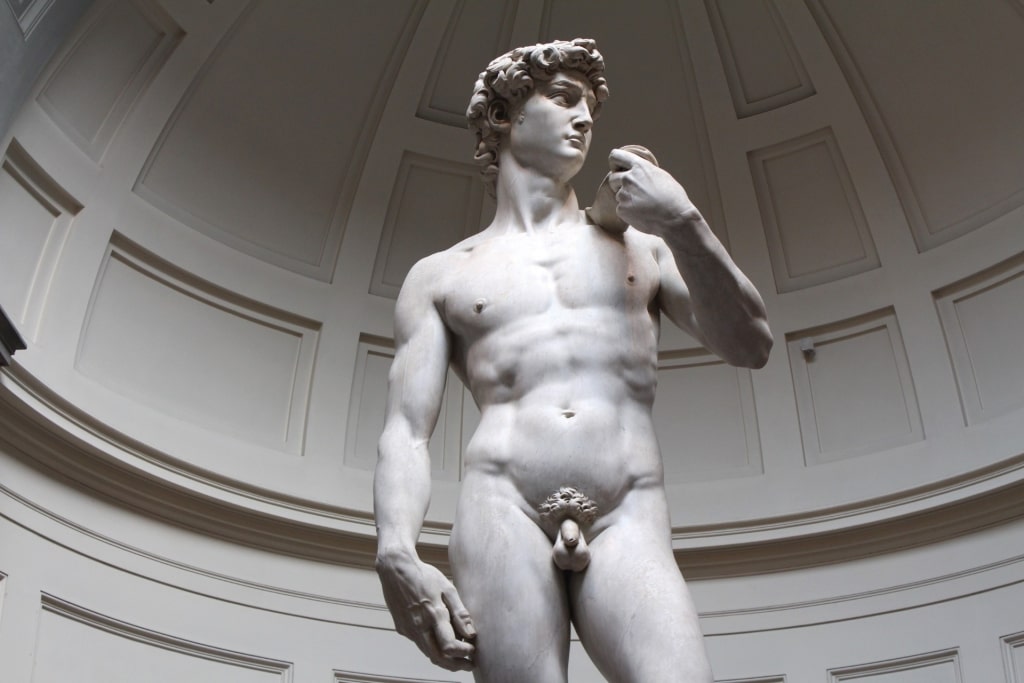
Galleria dell’Accademia, Florence
Michelangelo’s David is the towering centerpiece in this museum in Florence, a renaissance masterpiece that achieves perfection in art. The work that went into carving this lifelike but 17ft-tall figure kept the artist busy from 1501 to 1504.
Tearing your eyes away from this wonder, you’ll find the gallery has many other works by Michelangelo, some unfinished. Among them are the four Prisoners, made for the tomb of Pope Julius II in 1520.
Giant figures, struggling to escape the massive blocks of marble from which they’re cut, they have a poignancy all their own. Other highlights include paintings by Botticelli, and Lippi, and a collection of musical instruments that includes a Stradivarius viola from 1690.
Read: Two Days in Florence
Doria Pamphilj Gallery, Rome
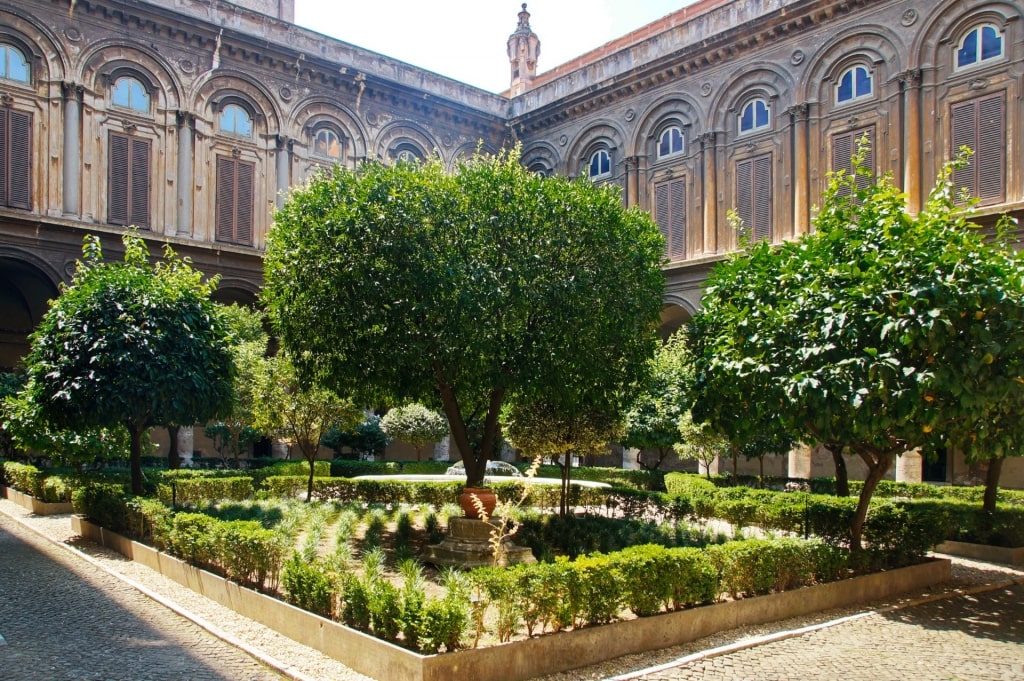
Doria Pamphilj Gallery, Rome
This private family gallery is a real gem, with masterpieces from the middle 15th to the 18th century. It holds works by everyone from Bruegel to Velazquez.
Major pieces include Velázquez’s unflattering Portrait of Innocent X (the former Cardinal Pamphilj), which the subject greeted with: E troppo vero! (It’s too true!). An early Caravaggio, The Rest on the Flight into Egypt, and Titian’s Salome are further highlights.
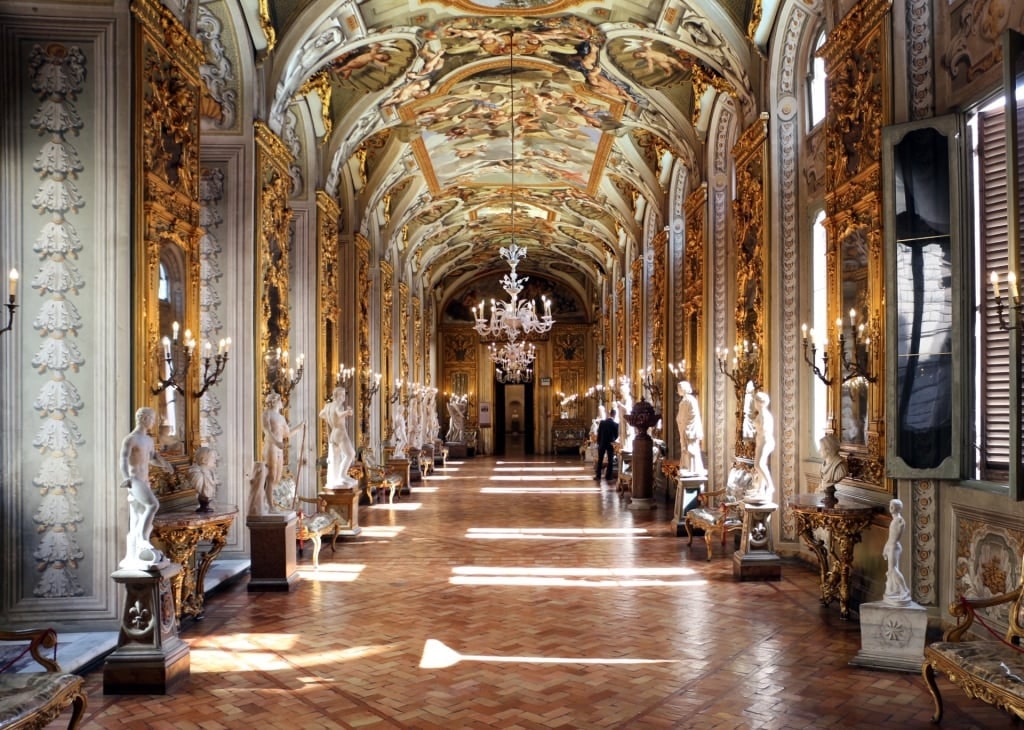
Doria Pamphilj Gallery, Rome Photo by Sailko on Wikimedia Commons, licensed under CC BY 3.0
The 1,000-room palace, which dates from 1505, is an opulent, rococo gem on Via del Corso. Its ornate tapestries, frescoes, furniture, and architecture are a strong part of the appeal.
Another nice personal touch is the audio guide, narrated by Prince Jonathan Pamphilj. It tells the history of the family, as well as the art collection.
Bargello National Museum, Florence
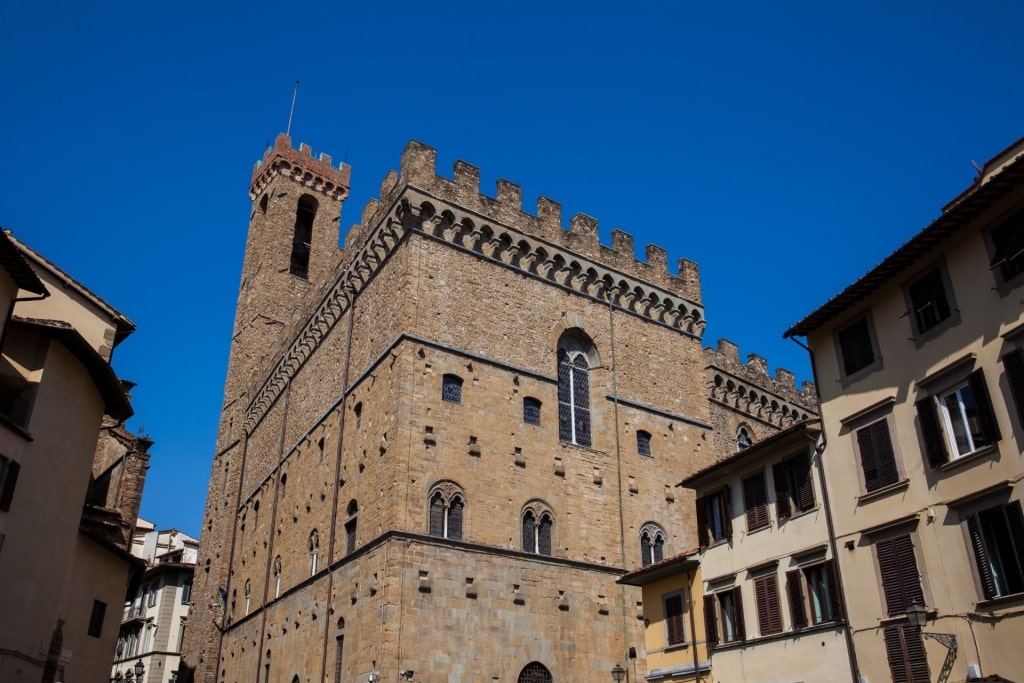
Bargello National Museum, Florence
This former barracks/prison from 1225 is one of the many great art museums in Florence overshadowed by the Uffizi Gallery. The oldest public building in Florence, it showcases works from the likes of Michelangelo, Giotto, and Donatello.
The building itself is magnificent, with a striking porticoed courtyard dominated by a grand gothic staircase. This leads to the Chapel of Mary Magdalene, once used by death row prisoners, who were perhaps comforted by its religious frescoes from the school of Giotto.
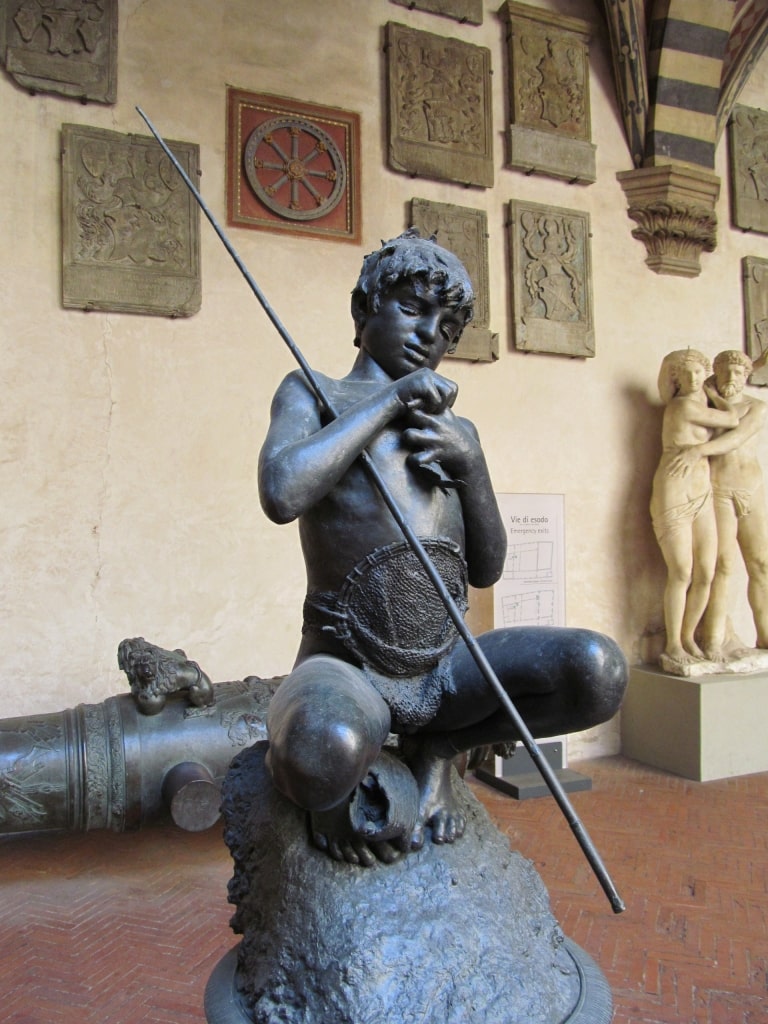
The Fisher Boy Photo by virtusincertus on Flickr, licensed under CC BY 2.0
Major delights in the museum include Gemito’s lively The Fisher Boy, Giambologna’s energetic Flying Mercury, and Michelangelo’s drunken Bacchus. Donatello’s two masterpieces—David and Saint George—should also not be missed.
Peggy Guggenheim Collection, Venice
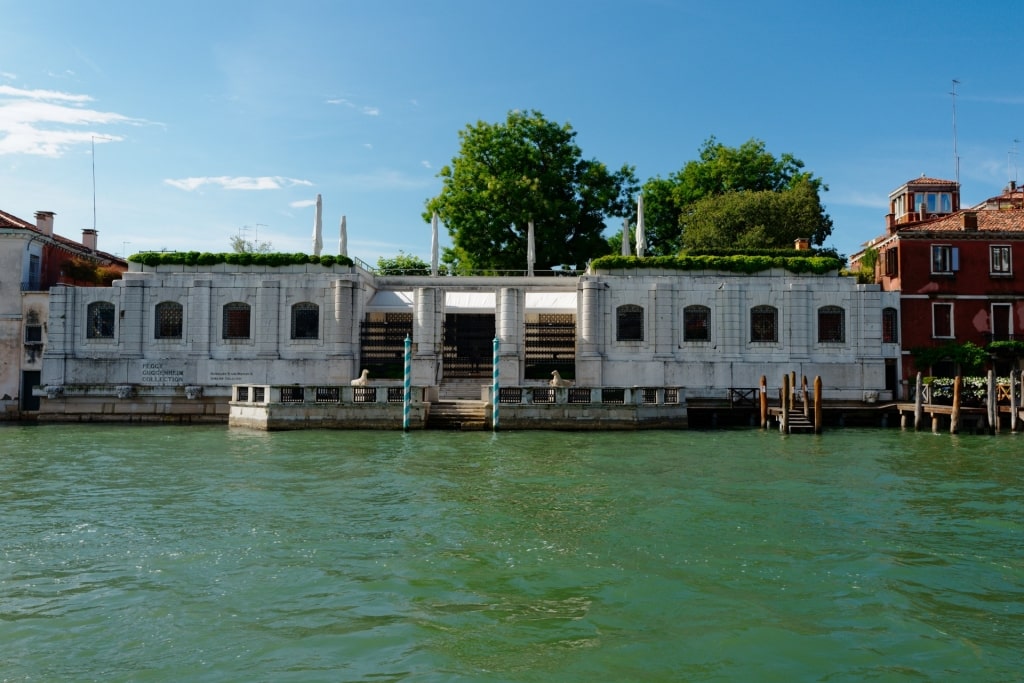
Peggy Guggenheim Collection, Venice
It’s always interesting to see an art collection put together by one individual. Guggenheim’s eccentric taste and sense of humor are clear to see in this striking showcase of 20th-century art.
The mood is set by Marino Marini’s Angel of the City (1948), which first greets visitors. The mounted Etruscan-style figure, arms thrown wide, faces the Grand Canal, on which the museum is located.
The range of art on show is amazing, from artists including Picasso, Magritte, Klee, Kandinsky, and Dali. A whole room in what is Guggenheim’s former home is dedicated to work by Jackson Pollock.
Galleria Regionale della Sicilia, Palermo
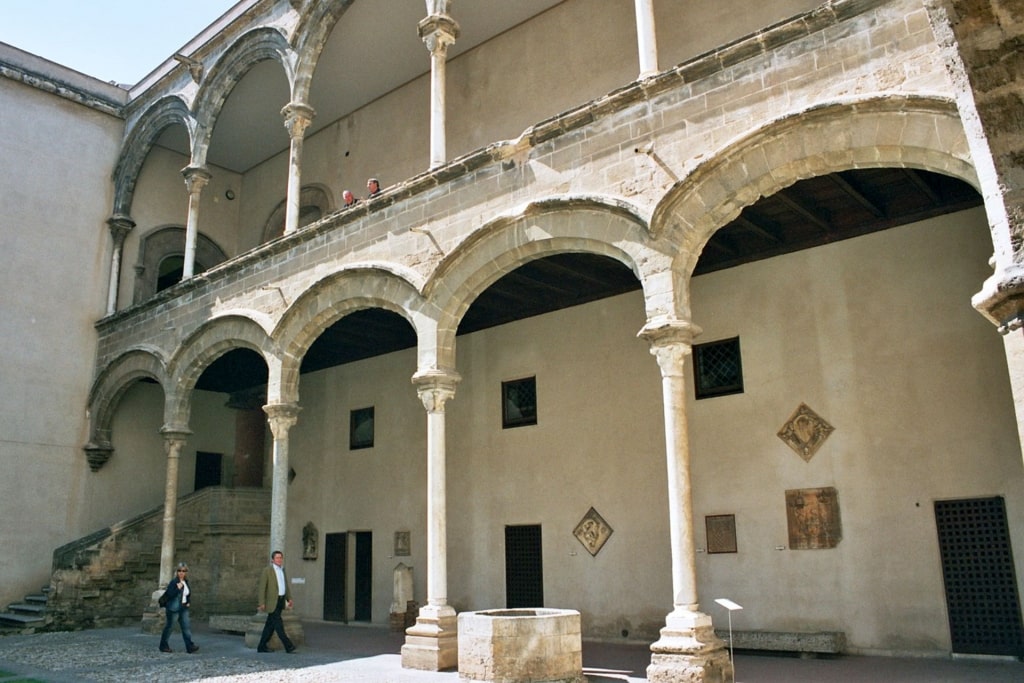
Galleria Regionale della Sicilia, Palermo Photo by Bjs on Wikimedia Commons, licensed under CC0 1.0
Sicily’s regional gallery holds some exquisite, little-known masterpieces that alone make it worth the trip to the island. The lovely 15th-century Palazzo Abatellis is the perfect setting for a collection that reminds you of Sicily’s former wealth and power.
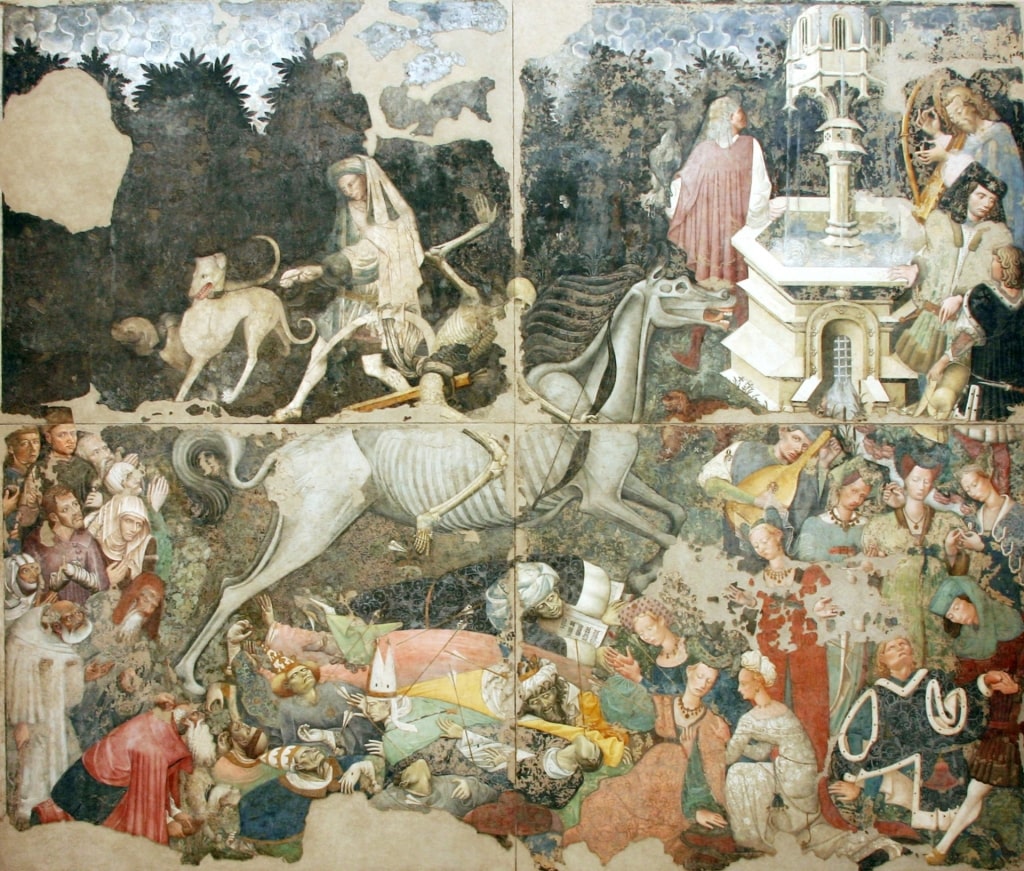
The Triumph of Death Photo by José Luiz Bernardes Ribeiro on Wikimedia Commons, licensed under CC BY-SA 4.0
The most powerful is The Triumph of Death, a massive fresco from around 1446. Painted by an unknown artist, it confronts ideas about mortality thrown up by the Black Death that swept through Europe a century earlier.
Antonello da Messina’s serene Our Lady of the Annunciation, and the Malvagna triptych by Flemish artist Jan Gossaert are also important works. Messina (1430-1479) has been credited with introducing oil painting to Italy.
Read: Best Places to Visit in Sicily
Maxxi, Rome
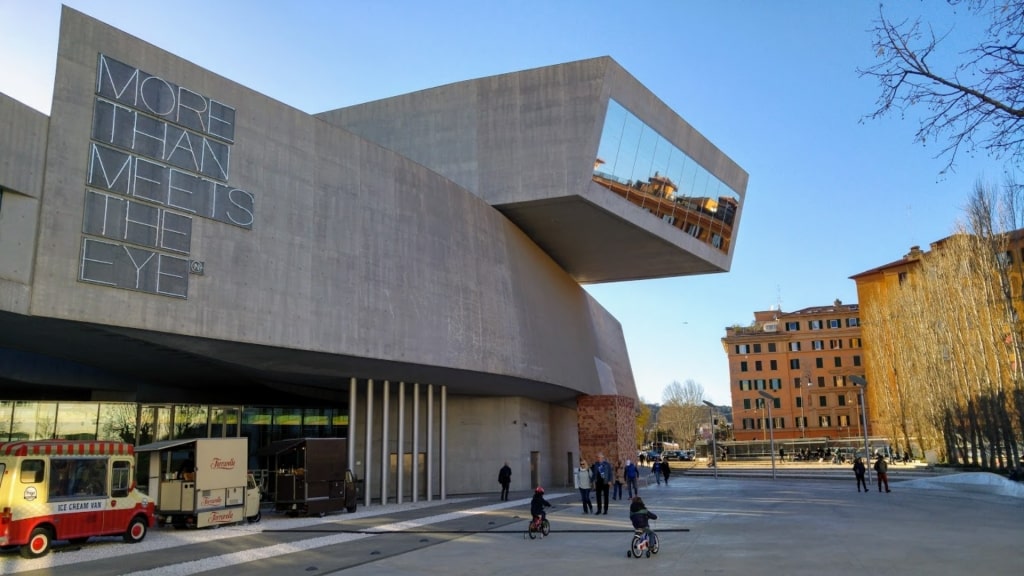
Maxxi, Rome Photo by Camelia.boban on Wikimedia Commons, licensed under CC BY-SA 4.0
Italy is best known for museums that feature religious works from the Renaissance, but the country’s national museum of 21st-century art belongs firmly to the present. Even its architecture, by the award-winning Zaha Hadid, sets it firmly apart.
Opening in the Flaminio area in 2010, Maxxi is still expanding its collection of both art, photography, and architecture. It still has the feel of finding its feet, and its architectural side may even be stronger than the painting, sculptures, and installations on show.
However, it’s one of the best museums in Rome to see some major contemporary works. You’ll come away with some sense of the exciting 20th- and 21st-century Italian art scene, at least.
Stand-out pieces include work by Francesco Clemente, Maurizio Cattelan, and Lara Favaretto. International artists in the collection include Anish Kapoor, William Kentridge, and Gerhard Richter.
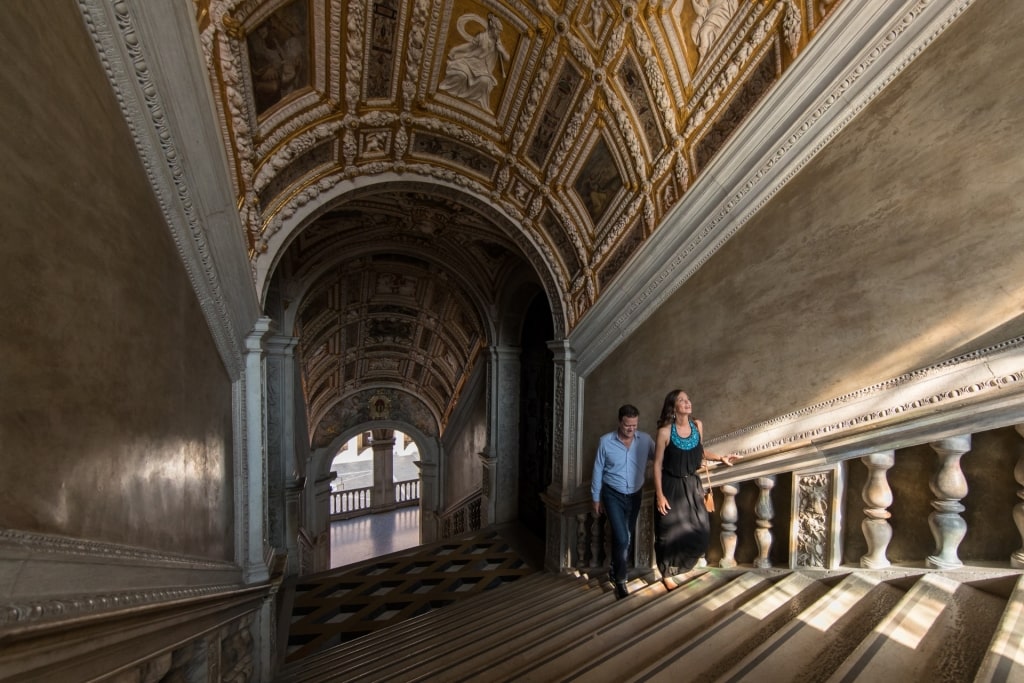
Doge’s Palace, Venice
Has this list of the best art museums in Italy inspired you to visit some, if not all, of them? Then browse Celebrity’s cruises to Italy and find the perfect cruise on which to be awed by some of the world’s greatest works of art.






